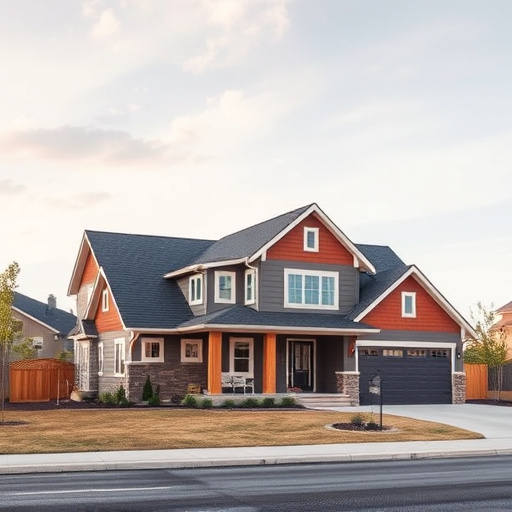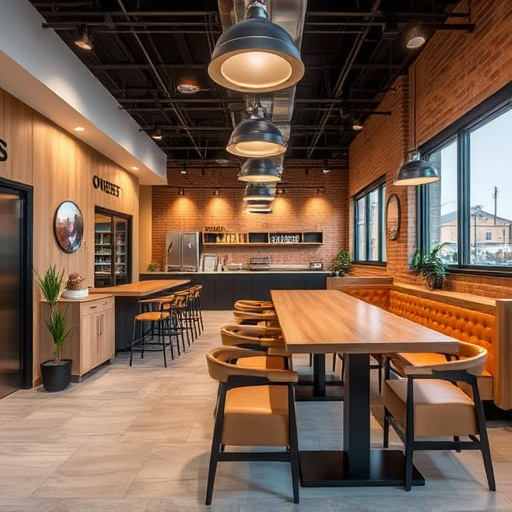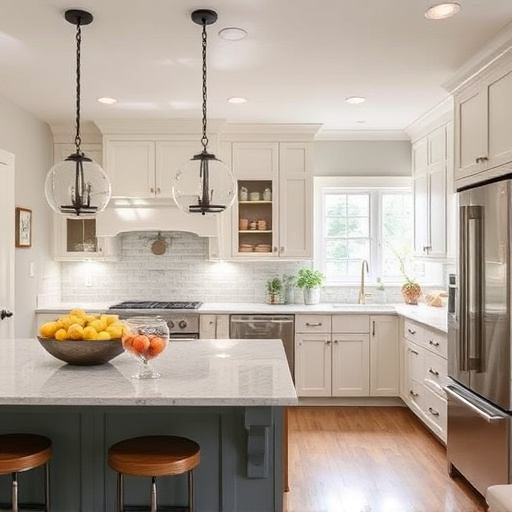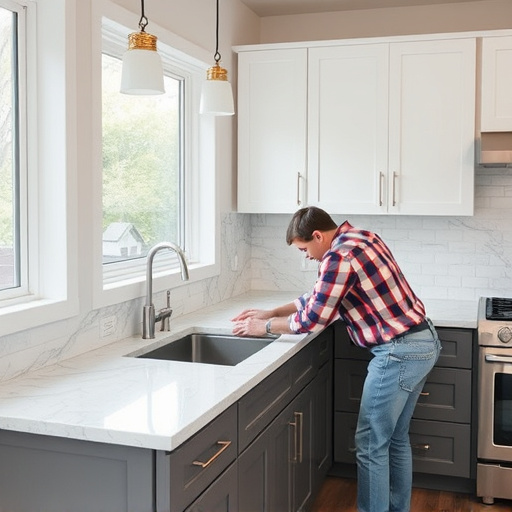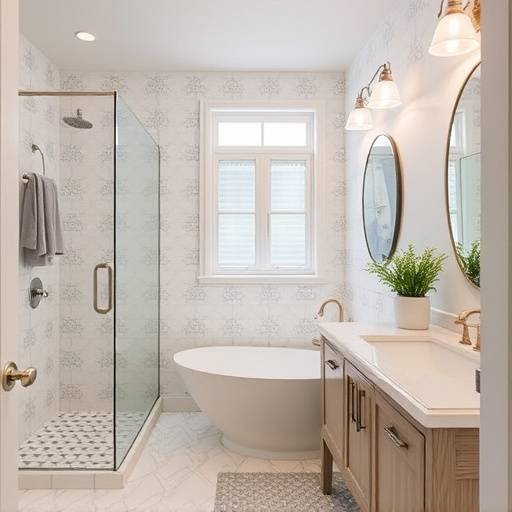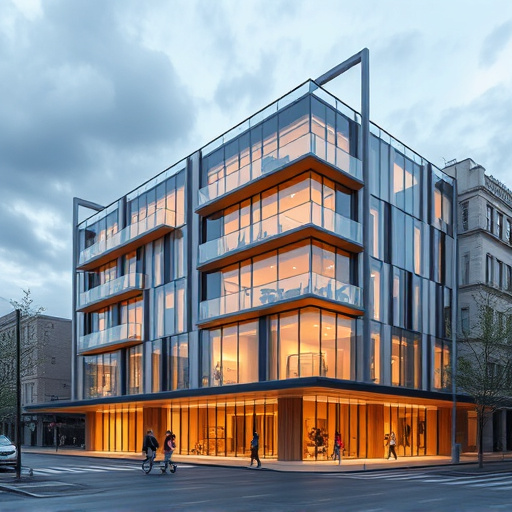For a successful commercial upgrade, understanding and adhering to ADA (Americans with Disabilities Act) compliance is crucial. This involves creating inclusive environments with specific features like wheelchair access, accessible restrooms, braille signage, tactile paving, and contrasting colors for visually impaired individuals. Key areas to prioritize include optimizing functional spaces, removing obstructions, following guidelines for color contrast in exterior painting, kitchen, and bath renovations, and adding grab bars for safety. A strategic approach centered around user needs, with engagement from ADA experts, ensures modifications that enhance overall remodeling plans while catering to diverse users.
In today’s inclusive world, ensuring ADA (Americans with Disabilities Act) compliance is not just a legal requirement but an essential step in enhancing any commercial space. When undertaking a commercial upgrade, understanding and adhering to ADA guidelines can be transformative. This article guides you through the process, from grasping the fundamentals of ADA compliance to identifying critical focus areas during upgrades. We also offer practical strategies for successful implementation, ensuring your commercial spaces are accessible and welcoming to all.
- Understanding ADA Compliance: The Why and What
- Key Areas to Focus On During Commercial Upgrades
- Implementing Change: Strategies for Successful ADA Compliance
Understanding ADA Compliance: The Why and What
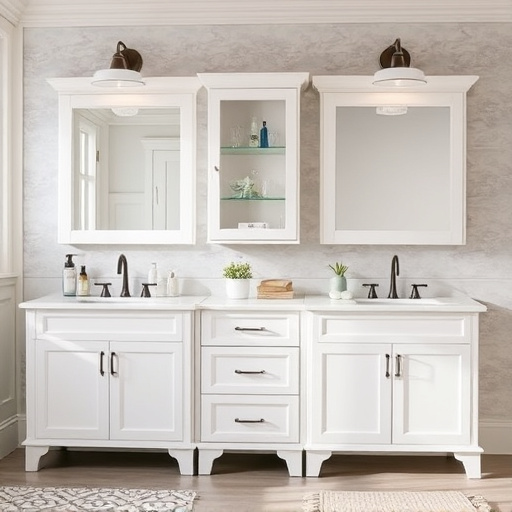
Understanding ADA compliance is crucial when planning a commercial upgrade. The Americans with Disabilities Act (ADA) ensures equal access and accessibility for people with disabilities in public spaces, including businesses and commercial properties. This legislation has far-reaching implications, particularly in terms of design and functionality, to accommodate various physical, sensory, or cognitive impairments.
For any commercial space, whether it’s a retail store, office building, or restaurant, ADA compliance involves creating an environment that is inclusive and usable for all customers. This includes considerations such as adequate clearances for wheelchair access, accessible restrooms, braille signage, tactile paving, and contrasting colors for visual impairment assistance. In the context of a commercial upgrade, it means integrating these essential features during renovation projects like residential renovations, kitchen and bath remodels, or interior painting to ensure full accessibility from the outset.
Key Areas to Focus On During Commercial Upgrades
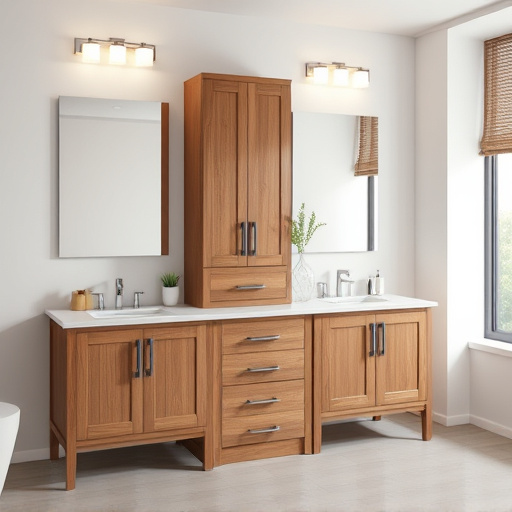
When undertaking a commercial upgrade, focusing on key areas ensures your project meets ADA (Americans with Disabilities Act) compliance standards. First and foremost, pay meticulous attention to functional spaces. These include entrances, corridors, and elevators, ensuring they’re wide enough for wheelchair access and free from obstructions. Consider the placement of fixtures, doors, and counters to accommodate users with diverse abilities.
Additionally, don’t overlook the exterior painting and kitchen and bath renovations. Ensure color contrast meets ADA guidelines for visually impaired individuals. Textures and patterns should also be carefully chosen to provide tactile guidance. In kitchens and baths, ensure sufficient clear space around fixtures and implement grab bars in shower stalls or near toilets for safety and accessibility.
Implementing Change: Strategies for Successful ADA Compliance
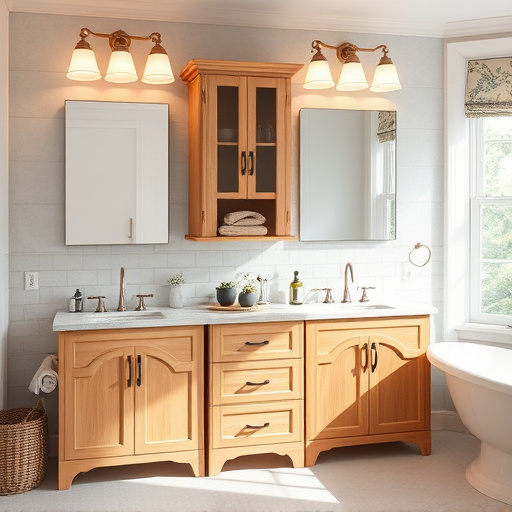
Implementing change to achieve ADA compliance during a commercial upgrade requires a strategic approach. Start by assessing the current space and identifying areas that need modifications to meet accessibility standards. This involves everything from adjusting flooring for ease of navigation, to ensuring proper clearances in doorways, and installing grab bars in bathrooms—all essential components for a seamless experience.
A successful strategy involves prioritizing user needs, engaging experts in ADA guidelines, and integrating these changes into the overall home remodeling or commercial upgrade plan. For instance, when tackling floor replacements, selecting materials that provide good contrast for visually impaired individuals can significantly enhance accessibility. Similarly, in kitchen and bath renovations, adding features like touchless fixtures and adjustable counters can cater to a diverse range of users.
When undertaking a commercial upgrade, prioritizing ADA compliance is not just a legal necessity but also a responsible step towards creating inclusive spaces. By focusing on key areas such as accessible entry points, clear signage, and adequate color contrast, businesses can ensure their facilities are welcoming to all. Implementing these strategies during the upgrade process not only avoids potential legal issues but also enhances the overall user experience, reflecting a commitment to diversity and equality in the built environment.








